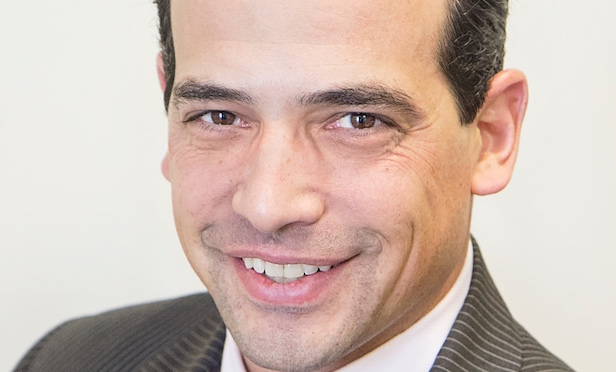 Spencer Levy, head of research, Americas and senior economic adviser, CBRE
Spencer Levy, head of research, Americas and senior economic adviser, CBRE
NEW YORK CITY—“The next five years are going to be a lot tougher than they were the last five years,” said Spencer Levy, CBRE's chairman, Americas research and senior economic adviser, at a media briefing on real estate's year ahead. “We're seeing upward pressure on cap rates. We're also seeing pressure on net effective rent with tenant improvement allowances. They are going up at a significant pace.”
But nonetheless CBRE is bullish on real estate in Manhattan and elsewhere. Why?
Investors are looking to secondary markets, like Orlando, Tampa, Austin, Portland, Columbus and San Diego. “In later cycle environments, people seek yield. Yield is king,” said Levy.
But New York is still an attractive game. He asks investors, “What's your cost of capital? What's your time horizon?” He added that New York is a fantastic market and remains the number one or two market in the world behind London for long-term core capital.
CBRE researchers anticipate 2019 to look similar to 2018, with about $500 billion in transactions across the US. The advisory firm found with the five major asset classes last year, the only group showing upward movement in cap rates was retail. “But I still believe the death of brick-and-mortar retail is the single most overblown story in my real estate career,” said Levy. “Other than that Y2K thing we saw in 2000.”
He looks at three things: talent, infrastructure and foreign money, and opined New York City scores high in all those areas.
“Foreign investment represents about 30% of the New York market which makes it second in the US only to San Francisco which is 35%. The number one market in the world is London, which is closer to 60%,” said Levy. “The depth and diversity of New York's capital base is almost unmatched globally and will give it strength throughout the economic cycles.”
What factors could cloud this sunny outlook?
Levy noted there is $250 trillion dollars of debt in the world today and only about $90 trillion GDP. “We are about 3 times leveraged as the world,” said Levy. “What this means is there is not as much fiscal or monetary dry powder to boost us out of it. I think this scenario of slower growth over the long term which will start in about a year is the most likely one.”
However, in a January 5, 2019 Fortune magazine article, “America's Disastrous New Normal: A Booming Economy and Soaring Deficits,” Shawn Tully states economic growth and the deficit are oddly both on the rise. Last year hit a record low of 3.4% unemployment, with growth exceeding 3%. Yet the deficit is projected to climb to 4.6% with higher numbers to come. Tully attributes this to spending and tax cuts.
The article quotes Marc Goldwein senior policy director of the non-partisan Committee for a Responsible Budget. He says the numbers show that economic growth even at 3% cannot wash away the deficit, which will continue to rise: “What's really scary, says Goldwein, is that the Congressional Budget Office projects that the rate of US economic expansion will drop below 2% by 2020, and stay in the sub-2% range for the next eight years.” The article states that would push the outstanding federal debt to GDP to “an extremely dangerous number.”
CBRE researchers analyze interest rates and inflation as under control. Levy said despite scaring the markets in December by raising interest rates, Fed chair Jerome Powell did it for the right reasons. Powell has said keeping interest rates too low for too long could risk inflation or financial destabilization. Levy summed up inflation as low, and predicted interest rates topping out, above 3% this year.
Finally, Levy pointed to keeping an eye on the inverted yield curve—when the yield for a shorter Treasury is higher than a longer-term Treasury.
A CNBC June 2017 article states dating back to the 1960s, an inverted yield curve predicted the last six recessions. A Forbes Dec. 4, 2018 article notes an inverted curve in March 2006 was an early indicator of the recession of 2008. On Dec. 3, 2018, it inverted. The next day, the Dow tumbled 795 points. Levy opined, “We may have dodged at least a leading indicator bullet.”
He recapped his firm's research emphasizing strong job growth, low inflation and deep and diverse capital market investments. “So despite the fear factor that showed up in the marketplace in December, we expect we are going to have a very good 2019.”
© Touchpoint Markets, All Rights Reserved. Request academic re-use from www.copyright.com. All other uses, submit a request to [email protected]. For more inforrmation visit Asset & Logo Licensing.







